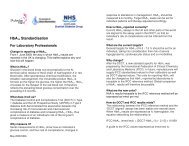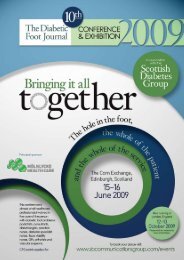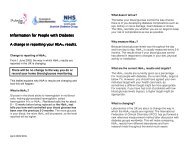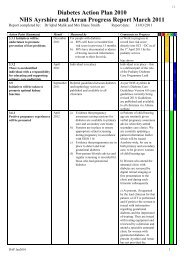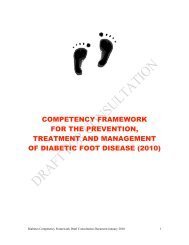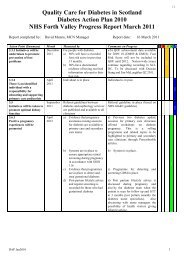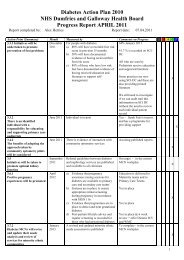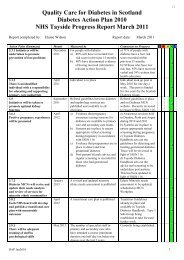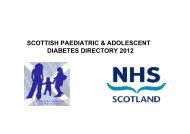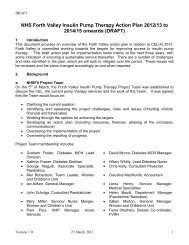DIABETES ACTION PLAN 2010
Diabetes Action Plan 2010 - Scottish Government
Diabetes Action Plan 2010 - Scottish Government
- No tags were found...
You also want an ePaper? Increase the reach of your titles
YUMPU automatically turns print PDFs into web optimized ePapers that Google loves.
<strong>DIABETES</strong> <strong>ACTION</strong> <strong>PLAN</strong> <strong>2010</strong><br />
QUALITY CARE FOR <strong>DIABETES</strong> IN SCOTLAND<br />
Current initiatives that will help address this target include the growing availability of<br />
structured education programmes for people with established diabetes to help them<br />
manage the condition more effectively and ongoing discussions with NHS 24 on<br />
developing its services for people with diabetes. The Scottish Ambulance Service is<br />
considering a revision of its guidelines to reduce episodes of repeat severe hypoglycaemia.<br />
Hypoglycaemia<br />
Hypoglycaemia (hypo) occurs when blood glucose levels drop below<br />
normal levels and is a common complication of injecting insulin. It can also<br />
occur in people with type 2 diabetes who are taking insulin or certain oral<br />
medication. It can be classified as mild, moderate or severe; severe<br />
hypoglycaemia needs third party help with recovery. The Scottish<br />
Ambulance Service (SAS) has adopted ‘See and Treat’ Guidelines which<br />
recommend that in most cases it is preferable for people with<br />
hypoglycaemia to remain at home. Evidence from a research project under<br />
way in Stirling University suggests that around 7,000 diabetes calls to the<br />
SAS relate to hypos including a significant number of repeat callers. It is<br />
thought that as the number of people with type 2 diabetes taking insulin<br />
increases, there may well be a corresponding increase in severe<br />
hypoglycaemia.<br />
45




